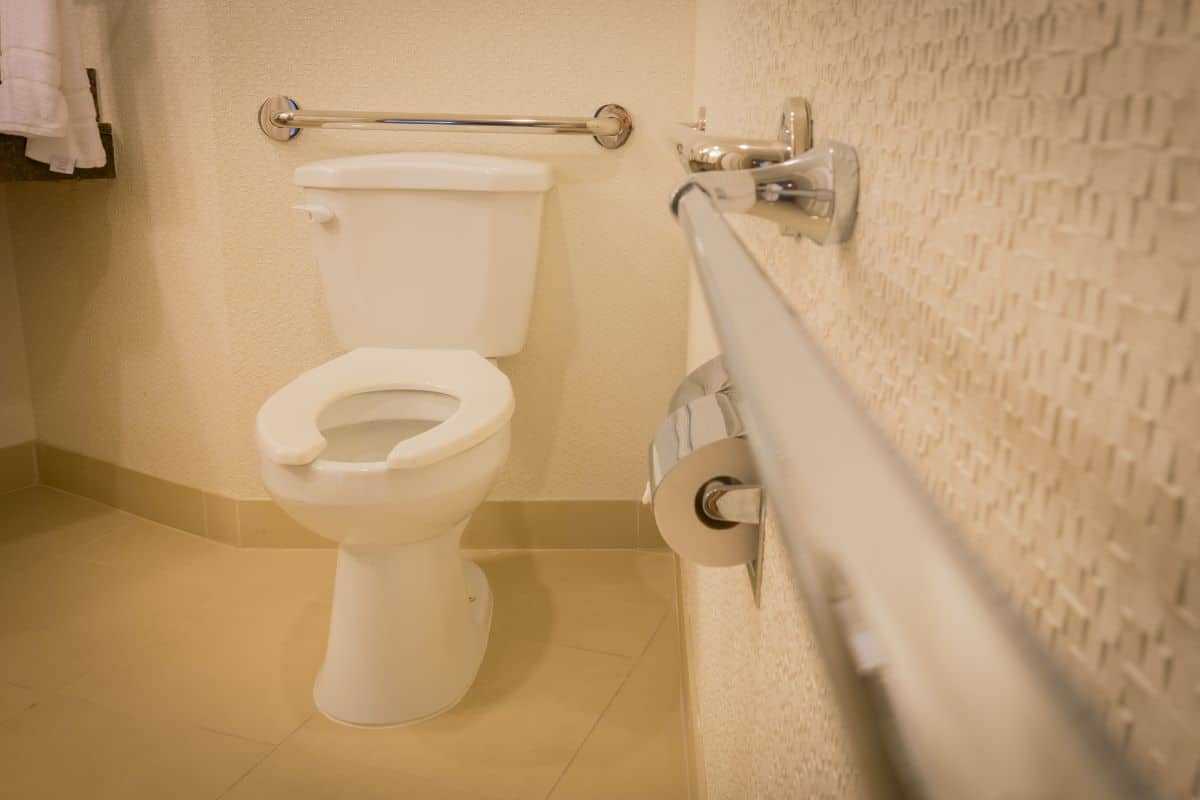
In today’s society, inclusivity and accessibility are essential values that we should prioritize. One area where this is particularly important is in our bathrooms. For individuals with disabilities, a bathroom that is not designed with their needs in mind can be a major obstacle to independence and everyday tasks. By creating inclusive bathrooms, we can ensure that everyone, regardless of their abilities, can use these facilities comfortably and safely. In this article, we will explore the significance of accessible bathrooms and discuss some key considerations for designing and adapting these spaces.
The Impact of Inaccessible Bathrooms
For individuals with disabilities, an inaccessible bathroom can pose numerous challenges and limitations. It can affect their ability to perform basic self-care tasks, such as bathing, using the toilet, or washing their hands. It may also lead to a loss of privacy and dignity, as they may require assistance from others due to inaccessible fixtures and features.
Furthermore, inaccessible bathrooms can increase the risk of accidents and injuries. The lack of grab bars, non-slip surfaces, and appropriate seating options can result in falls or strains. This not only affects the physical well-being of individuals with disabilities but also takes a toll on their mental health and overall quality of life.
Designing Inclusive, Accessible Bathrooms
Creating inclusive bathrooms involves thoughtful design and consideration of various factors. Here are some key elements to consider when designing or adapting a bathroom to be more accessible:
1. Accessible bathrooms require adequate space for mobility aids.
An inclusive bathroom should have sufficient space to accommodate mobility aids such as wheelchairs or walkers. Clear floor space allows individuals to maneuver comfortably and ensures accessibility for all users.
2. Use accessible bathroom fixtures that are easy to operate with limited mobility.
Consider installing fixtures that are accessible to individuals with disabilities. This includes installing grab bars near the toilet and shower areas, using lever-style handles for faucets, and ensuring that mirrors and other features are placed at appropriate heights.
3. Use non-slip surfaces to prevent falls in seniors and people with balance difficulties.
Incorporate non-slip surfaces in the bathroom for safety and injury prevention. This can include using slip-resistant flooring materials and adding mats or strips in areas prone to getting wet, such as the shower or bathtub.
4. Place fixtures at accessible heights and/or use adjustable fixtures.
Make sure that fixtures, such as sinks and countertops, can be adjusted to different heights to accommodate individuals with varying needs. This flexibility allows for better accessibility and comfort during use.
5. Use proper lighting for people with visual impairments.
Good lighting is crucial for individuals with visual impairments or those who may require assistance in navigating the bathroom. Ensure that the bathroom is well-lit, with bright and evenly distributed lighting, while minimizing glare.
6. Use assistive devices to enhance bathroom accessibility.
Consider incorporating assistive devices and technologies to enhance accessibility. This can include features like raised toilet seats, shower chairs, or handheld showerheads that can be used while seated.
7. Ensure privacy and safety for people with disabilities.
Design the bathroom in a way that ensures privacy and safety for individuals with disabilities. This can involve the use of privacy screens, accessible locks, and appropriate signage to indicate accessible features and facilities.
The Benefits of Inclusive, Accessible Bathrooms
Creating inclusive bathrooms goes beyond meeting accessibility standards; it promotes independence, dignity, and inclusivity for all individuals. The following are some of the main advantages:
1. Accessible bathrooms promote independence.
An inclusive bathroom empowers individuals with disabilities to perform self-care tasks independently, fostering a sense of autonomy and self-confidence.
2. Accessible bathrooms provide safety for people of all ages and abilities.
By incorporating safety features like grab bars and non-slip surfaces, inclusive bathrooms minimize the risk of accidents and injuries, promoting the overall well-being of users.
3. Inclusive bathrooms provide dignity and privacy.
Accessible bathrooms ensure that individuals with disabilities can maintain their privacy and dignity while using the facilities, reducing the need for assistance from others.
4. They ensure equality and inclusion.
Inclusive bathrooms send a powerful message of equality and inclusion, demonstrating that everyone’s needs are valued and accommodated.
5. Accessible public restrooms are often required by law.
Many countries have laws and regulations that mandate accessibility standards for public spaces, including bathrooms. By creating inclusive bathrooms, you ensure compliance with these requirements and avoid potential legal issues.
Promoting Awareness and Advocacy for Accessible Bathrooms
Creating accessible bathrooms is a significant step towards fostering a more inclusive society. However, it is equally important to raise awareness and advocate for the importance of these accessible spaces. Here are some ways we can promote awareness and advocate for inclusive bathrooms:
1. Educate and train professionals on bathroom accessibility best practices.
Educate the public, including architects, contractors, and building owners, about the significance of inclusive bathrooms. Offer training programs or workshops that highlight the benefits of accessibility and provide practical guidance on designing and adapting bathrooms to be inclusive.
2. Collaborate with disability organizations.
Partner with disability organizations and advocacy groups to raise awareness about the challenges individuals with disabilities face in accessing bathrooms. Work together to develop resources, campaigns, and initiatives that highlight the need for inclusive bathrooms.
3. Engage with government and policymakers.
Advocate for policies and regulations that require the inclusion of accessibility features in public and private bathrooms. Collaborate with lawmakers and government agencies to ensure that accessibility standards are upheld and enforced.
4. Raise public awareness about the importance of accessible bathrooms.
Use various channels, such as social media, public forums, and community events, to raise awareness about the importance of inclusive bathrooms. Share personal stories and experiences with disability to emphasize the impact of accessible facilities.
5. Encourage businesses to prioritize accessibility.
Encourage businesses, including restaurants, hotels, and entertainment venues, to prioritize accessibility by creating inclusive bathrooms. Emphasize the potential economic benefits, such as attracting a broader customer base and improving customer satisfaction.
Highlight successful examples of inclusive bathroom designs and adaptations. Showcase real-life case studies and testimonials from individuals who have benefited from these accessible spaces. By sharing best practices, we can inspire others to follow suit and prioritize inclusivity.
7. Involve the community.
Engage the local community in discussions and initiatives surrounding accessible bathrooms. Encourage community members to become advocates and ambassadors for accessibility, creating a grassroots movement for change.
8. Create a culture of continuous improvement.
Promote a culture of continuous improvement when it comes to accessibility. Encourage businesses and individuals to regularly assess and update their bathrooms to ensure they meet evolving accessibility standards and accommodate the changing needs of users.
By promoting awareness and advocating for inclusive bathrooms, we can create a society that values and prioritizes accessibility for all. Inclusive bathrooms are not just a matter of convenience; they are a fundamental human right. Let us work together to remove barriers, challenge stigmas, and create a more inclusive world where every individual can access and use bathrooms with dignity and independence.
Accessible bathrooms play a crucial role in promoting accessibility, dignity, and independence for individuals with disabilities. By designing and adapting bathrooms to meet the needs of all users, we can break down barriers and create a more inclusive society. Let us embrace the importance of inclusive bathrooms and work towards a future where accessibility is standard in all public and private spaces. We can all work together to ensure that nobody is left behind.
Iam a freelance writer with a passion for crafting compelling stories and engaging content. I thrive on the freedom and flexibility that comes with my profession.
Whether it's crafting engaging blog posts, thought - provoking articles, compelling stories or, informative content , I approach with enthusiasm and dedication. Iam not just being limited to a writer, but I also possess the creative flair of a graphic designer.
Apart from writing, I find solace in nature, often taking long walks in the park or spending time in serene environment to find inspiration and reconnect with myself







